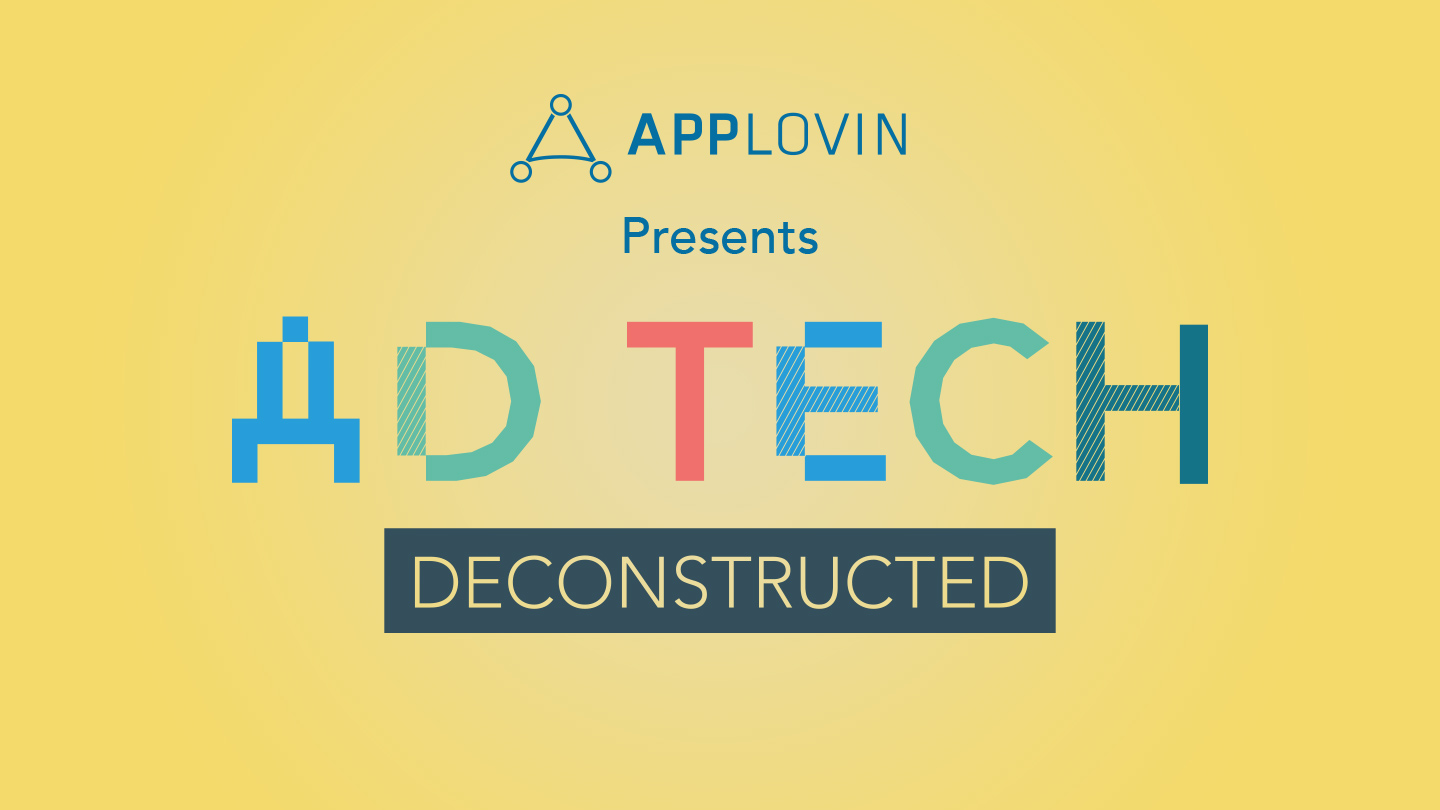Brand Advertising, In-app Bidding, Monetization
AppLovin presents: Ad Tech Deconstructed—a glossary for ad tech terms and concepts
Nov 9, 2018

Brand Advertising, In-app Bidding, Monetization

The world of ad tech is full of jargon and complex concepts. What’s why we’re breaking things down for you in our Ad Tech Deconstructed series where we put various ad tech terms and concepts under a microscope.
Here’s what we’ve covered so far.
Header bidding is an advanced programmatic advertising method where advertisers are granted a “first look” at publisher inventory that is available across multiple ad exchanges simultaneously (also known as a “pre-bid”). It started as a bidding method for desktop web advertising, allowing publishers to work with third-party header bidding providers to implement code in a web page’s header. This code allows these providers to access multiple ad exchanges at once.
Click here for a full explanation about header and in-app bidding and how it works.
Mobile attribution is how app marketers know exactly what led users to them and how they subsequently interact with the brand. Attribution partners take into account user events like clicks, IAPs, and installs to attribute them to marketers’ specific campaigns or channels.
Click here for a full explanation about mobile attribution and how it works.
CPCV stands for cost per completed view while CPI stands for cost per install. These two monetization models have different goals for rewarded video. Learn how to use both to maximize your revenue.
Click here for a full explanation about when to use CPCV and CPI.
A mediation layer essentially automates the optimization of the programmatic waterfall based on parameters set by publishers. When an ad request is sent, the mediation layer quickly decides which ad source will yield the highest CPM for that impression, and the optimal ad in that network is served.
Click here for a full explanation of what a mediation layer does.
It’s common knowledge that CPM stands for “cost per mille,” meaning the cost per thousand ad impressions, but what does eCPM mean and why is it used? It stands for “effective cost per mille,” which essentially provides a more accurate look at how much ad revenue is actually generated from a number of impressions.
Click here for a full explanation of how eCPM differs from CPM and how it’s calculated.
Ad exchanges are somewhat of an intermediary between the supply and demand sides of the digital ad buying space. They’re what SSPs and DSPs plug into to access and exchange ads and inventory from a wide variety of publishers and advertisers. Essentially, they’re the pool that impressions are taken from.
Click here for a full explanation about what ad exchanges are and how they’re different from SSPs.
Real-time bidding is a programmatic process through which DSPs and SSPs buy and sell advertising inventory. DSPs bid on ad space in an RTB auction, and the winning ad is given to the highest bidder and is loaded nearly instantly on a user’s device.
Click here for a full explanation about how RTB works.
Supply-side platforms work largely like demand-side platforms but for the publisher side. SSPs create a place for publishers to make potential ad impressions available. Put simply, in an RTB auction, SSPs are the auctioneer, and DSPs are the buyers.
Click here for a full explanation about how SSPs work.
In an RTB auction, DSPs set prices and bid on ad space as soon as it becomes available. In literally milliseconds, DSPs process requests for ad space, choose the best impression, bid on it, and then the ad is served in an app.
Click here for a full explanation about how DSPs work.